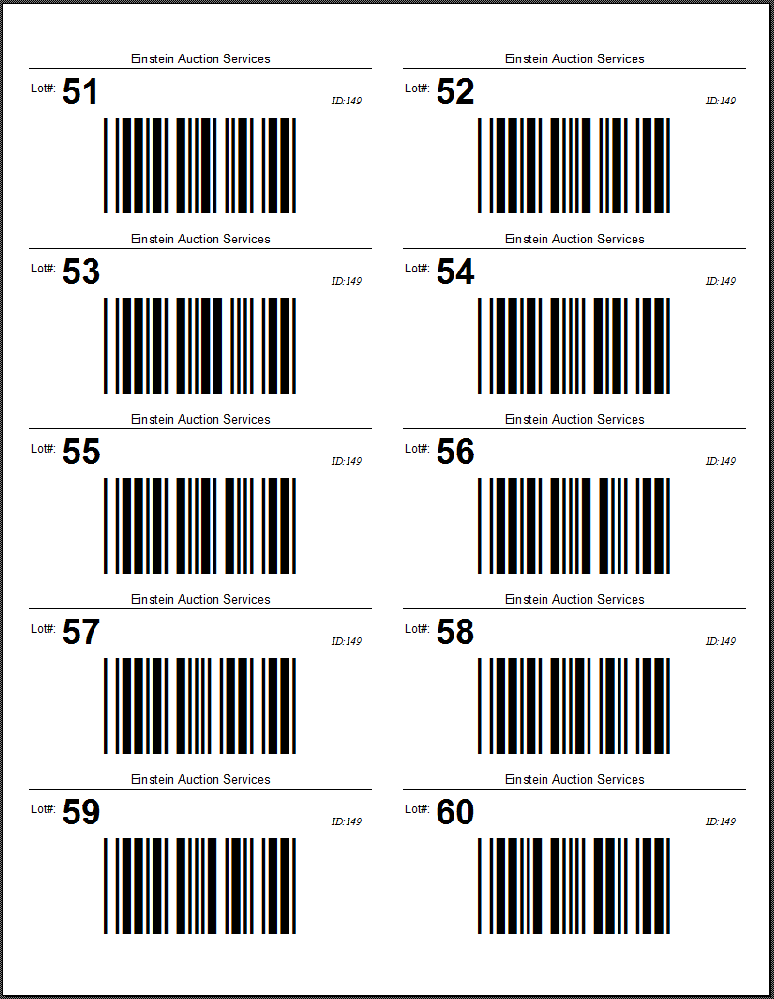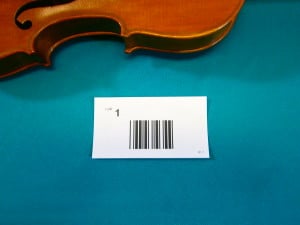Catalog by Barcode Images Revisited
Auction Flex has had barcode image recognition built-in since April, 2008. It has come to our attention, however, that most of our customers are not aware of this feature or the improvements made to it over the years.
What Is Catalog by Barcode Images?
In short, it’s a super-fast way to build a catalog. You can pre-print barcode labels from within Auction Flex, affix the label to the lot, and then take a picture of the lot label. Now you can take as many subsequent pictures of the lot as required. Repeat this process for each lot. When you plug that camera (or memory card) into your computer Auction Flex will read the barcodes from the images and import all the non-barcode images into the correct lots automatically (no manual entry required).
v8.01.04 Cha-cha-cha-changes! (song)
In Auction Flex version 8.01.04 we made a few more changes to the Catalog by Barcode Images capability. Firstly, we made the feature more prominent by adding a dedicated button directly on the Auction Lots & Preview form (screenshot below).

The second change we made was to add a new lot label that is specifically optimized for barcode image recognition. You can find this label in Auction Lots & Preview->Reports->#70 . This new lot label report prints on Avery 5163 size labels – 2″ x 4″ (screenshot below).


The second change we made was to add a new lot label that is specifically optimized for barcode image recognition. You can find this label in Auction Lots & Preview->Reports->#70 . This new lot label report prints on Avery 5163 size labels – 2″ x 4″ (screenshot below).

In the above screenshot you will notice that the barcode was read from the first image and automatically excluded from being assigned to the lot. The second image, which is the first real image of the lot, is used to enter the consignor code, inventory type, description, and other relevant info. Each additional image can be used to type additional description from the image.
The thumbnail on the left is automatically blown up on the right when that row has focus. This allows you to see additional detail from the large image. Additionally, there is a built-in image editor for cropping, rotation, and adjustment of brightness/contrast. To open the image editor simply double-click on the thumbnail image.
The Process
The process for cataloging by barcode images is very simple.
- Start by pre-printing the barcode lot labels. To print them go to Auction Lots & Preview, click Reports button at lower left, then select report #70 “Catalog by Image Barcode Labels (Avery 5163)”.
- Change your camera to use a very low quality setting (1 or 2 megapixels is fine). Remember that unless you are taking pictures to be printed in professional glossy catalogs there is no reason to take huge 8+ megapixel images. The consequence of taking unnecessarily large pictures is that they will take longer to transfer from the camera or memory card, they will slow down the barcode image recognition, and they will slow-down the automatic web compression built into Auction Flex.
- Affix the label to a lot (or lot tag).
- Take a fairly close picture of the lot such that the lot label takes up about 1/4 to 1/3 of the image area. Do NOT use macro mode on your camera
.
- Now take one or more pictures of the lot trying not to include a visible barcode.


- Repeat steps 3-5 for as many lots as you care to do.
- Connect your camera or memory card to your computer.
- From Auction Flex go to Auction Lots & Preview and click the Catalog by Barcode Images button.
- Step 1 in this form allows you to choose the folder where the images are stored. Click the ... button and select the appropriate folder location. Then click Next Step.

- Now you are on the main data entry screen where you fill in the lot info (consignor code, quantity, inventory type, lead, description, etc...). Once you're done with the data entry click Next Step.

- The final step is to click the Import Images button. Auction Flex will then create your lots, attach the images, and automatically optimize your images for the Internet.
Questions?
In closing it’s important to note that no single cataloging process works perfectly for every auctioneer. That is why Auction Flex offers many different ways to build your catalog. For questions on this process, any other cataloging process, or anything at all, please don’t hesitate to contact us.